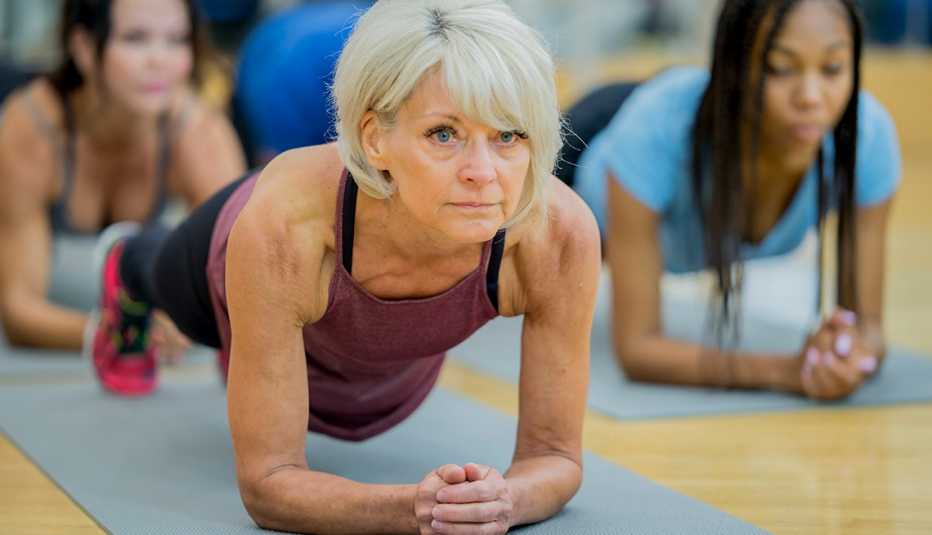Staying Fit


While it might be the last thing you feel like doing when your back or knees are bothering you, staying active is one of the top ways experts recommend to beat back age-related aches and pains, particularly around major joints such as your back, knees, hips and shoulders. But which strengthening and stretching exercises work best for what? We asked physical therapists and experts from the American Academy of Orthopaedic Surgeons to lay out options for the most commonly reported trouble spots. Some work to provide relief in the moment, while others build up strength that fends off pain down the road.
For your back
“The most important thing with back pain is to keep moving, especially with activities that keep your core strong, such as walking, yoga or tai chi,” says physical therapist Meredith Harris, a spokesperson for the American Physical Therapy Association. In fact, yoga is just as effective as physical therapy for treating folks with chronic low back pain, according to a 2017 study published in the Annals of Internal Medicine. But if you just can’t get into a Downward Dog, try these moves instead.


AARP Membership— $12 for your first year when you sign up for Automatic Renewal
Get instant access to members-only products and hundreds of discounts, a free second membership, and a subscription to AARP the Magazine.
Kegel
“It strengthens the transversus abdominis, one of our major core muscles that supports our low back,” explains Christi Reinhardt, a physical therapist at the Hospital for Special Surgery in New York City.
Try it: The trickiest part of the kegel is identifying the right muscles: You can do this by stopping your flow of urine midstream. Once you’ve done that, start with tightening these muscles for five seconds, then relaxing them for five seconds, five times a day. As you get comfortable, build up to 10 seconds at a time. Eventually, you want to do three sets of 10 reps each day.
Superman
This exercise strengthens your entire upper and lower back, Harris says.
Try it: Lie on your stomach on a flat surface and raise both your arms and your legs at the same time, as though you are flying. Hold for five seconds, then return to starting position. Repeat 10 times.
Bridge
“People often assume a plank is best for core and back strength, but if you do it wrong, it can irritate the back,” Reinhardt says. A hip bridge works all the same muscles, but is more forgiving.
Try it: Lie on your back either on the floor or on a bed, your arms at your sides, knees bent, and your feet flat. Tighten your tummy and butt muscles, then lift your pelvis so your body is in a straight line from your shoulders to your knees. Hold for 15 seconds, then slowly return to your start position. Repeat five times.
Knee to chest stretch
This stretches out your lower back as well as the front of your hip and inner thigh, Reinhardt says.
Try it: Lie on your back on the floor, then lift one leg and bring your knee toward your chest. Hold for five seconds, with your abdominals tight and your spine pressed to the floor. Release and repeat on the other side. Repeat the sequence 10 times.
Posture check
One reason for back pain among older adults is poor posture. “People don’t even realize the slow subtle changes that can occur as back muscles age,” says physical therapist James Nussbaum, clinical and research director of ProHealth & Fitness PT OT in New York City. But as you slide into slouching, more and more pressure is put on your spine, causing pain.
What to do: Stand with your back, buttocks and heels against the wall. If you can’t get into this position, or can only do it with your chin lifted up, you need to practice perfecting your posture, Nussbaum says. Place a couple of towels behind your head, then press your head and back against the wall. Imagine you’re trying to bring your belly button toward your spine. Hold for a minute, and repeat four to six times each day.

































































More on Health
New Relief for Migraines
Advances in treating the mother of all headaches, from Botox to better drugsBeating Pain Without an RX
Research shows there really are effective ways to tame pain without drugs